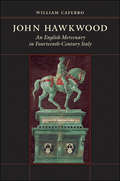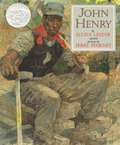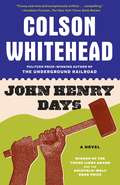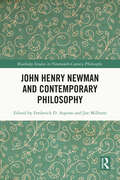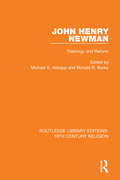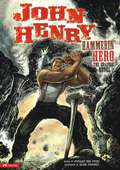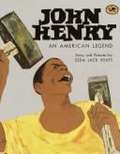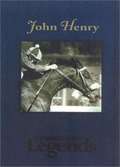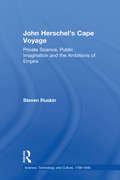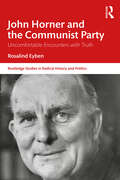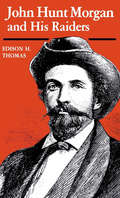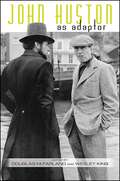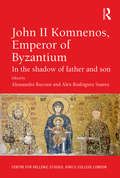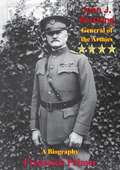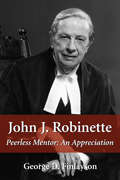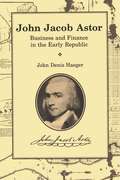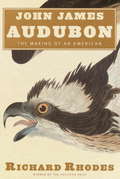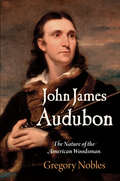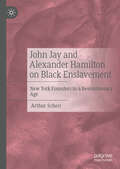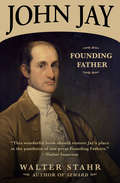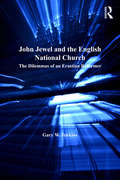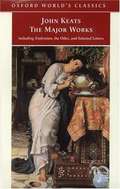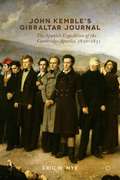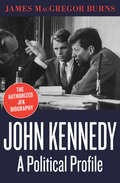- Table View
- List View
John Hawkwood: An English Mercenary in Fourteenth-Century Italy
by William CaferroWinner, 2008 Otto Gründler Book Prize, The Medieval InstituteWinner, 2008 Otto Gründler Book Prize, The Medieval InstituteNotorious for his cleverness and daring, John Hawkwood was the most feared mercenary in early Renaissance Italy. Born in England, Hawkwood began his career in France during the Hundred Years' War and crossed into Italy with the famed White Company in 1361. From that time until his death in 1394, Hawkwood fought throughout the peninsula as a captain of armies in times of war and as a commander of marauding bands during times of peace. He achieved international fame, and city-states constantly tried to outbid each other for his services, for which he received money, land, and, in the case of Florence, citizenship—a most unusual honor for an Englishman. When Hawkwood died, the Florentines buried him with great ceremony in their cathedral, an honor denied their greatest poet, Dante. William Caferro's ambitious account of Hawkwood is both a biography and a study of warfare and statecraft. Caferro has mined more than twenty archives in Britain and Italy, creating an authoritative portrait of Hawkwood as an extraordinary military leader, if not always an admirable human being.
John Henry
by Julius LesterJohn Henry is stronger than ten men, and can dig through a mountain faster than a steam drill. Julius Lester's folksy retelling of a popular African-American folk ballad has warmth, tall tale humor, and boundless energy. <P><P>Jerry Pinkney illustrates the story with "rich colors borrowed from the rocks and the earth, so beautiful that they summon their own share of smiles and tears" (Booklist).<P> <p><B>Caldecott Honors Book</B>
John Henry Days
by Colson WhiteheadColson Whitehead’s eagerly awaited and triumphantly acclaimed new novel is on one level a multifaceted retelling of the story of John Henry, the black steel-driver who died outracing a machine designed to replace him. <P><P>On another level it’s the story of a disaffected, middle-aged black journalist on a mission to set a record for junketeering who attends the annual John Henry Days festival. <P>It is also a high-velocity thrill ride through the tunnel where American legend gives way to American pop culture, replete with p. r. flacks, stamp collectors, blues men , and turn-of-the-century song pluggers. <P>John Henry Days is an acrobatic, intellectually dazzling, and laugh-out-loud funny book that will be read and talked about for years to come.
John Henry Newman and Contemporary Philosophy (Routledge Studies in Nineteenth-Century Philosophy)
by Frederick D. Aquino Joe MilburnWhile John Henry Newman’s writings have long received the attention of historians, theologians, and literary critics, they have largely been neglected by philosophers. However, Newman’s importance as a philosopher is just now beginning to be acknowledged.This volume brings together leading philosophers and Newman scholars to explore the contours of his philosophical thought and to show its relevance to contemporary philosophy. The chapters explore, develop, and evaluate Newman’s thought, considering recent work in epistemology, philosophy of religion, moral philosophy, and philosophy of education.John Henry Newman and Contemporary Philosophy will be of interest to scholars and advanced students interested in nineteenth-century philosophy, philosophy of religion, epistemology, moral philosophy, philosophy of education, and nineteenth-century religious thought.
John Henry Newman: Theology and Reform (Routledge Library Editions: 19th Century Religion #2)
by Michael E. Allsopp Ronald R. BurkeThis collection of papers, first published in 1992, grew out of a concern for the perduring nature of the thought of John Henry Cardinal Newman. Although Cardinal Newman died over one hundred years ago, his influence on today’s thinking is still strong. Newman put forward an ideal of society and life which has a recognizable relation to the lasting possibilities open to humankind. The editors and contributors of this volume have been brought together by a common interest in a man for whom the continual search for truth is paramount.
John Henry, Hammerin' Hero: The Graphic Novel (Graphic Spin)
by Stephanie True Peters Nelson EvergreenBorn with a hammer in his hand, John Henry was destined to become a steel-driving legend. As a young man, he makes his mark on the American railroads, whistling while he works. But one day, a shady salesman comes to the railroad camp, claiming that his hammering machine is superior to any railroad worker. John Henry steps up to challenge the man's machine, hoping to save the jobs of thousands of railroad workers. But will John Henry be able to prove that a machine can't do what a man can?
John Henry: An American Legend
by Ezra Jack KeatsThe larger-than-life character of John Henry and his incredible strength provide readers with a special introduction to the fantasy element of legend. The rewards of hard physical labor are also described in this exciting adventure of man vs. machine.
John Henry: Racing's Grand Old Man (Thoroughbred Legends #10)
by Steve HaskinJohn Henry continues to entertain horse racing and sports fans with its true rags to riches tale. A plain brown, small, bad-tempered animal, John Henry was the horse no one wanted until he was purchased sight unseen for $25,000 by Sam Rubin, a man who knew nothing about horses, except which end bit and which end kicked. Entrusted to California-based trainer Ron McAnally, John Henry blossomed into a star. Named Horse of the Year in 1981 as a six years old - an age when most racehorses are enjoying retirement - John Henry continued to race at the top level of the sport through the age of nine, when he was voted Horse of the Year for the second time. He retired as all-time leading money earner in 1984 with more than $6 million and lived the remainder of his life in luxury at the Kentucky Horse Park in Lexington.
John Herschel's Cape Voyage: Private Science, Public Imagination and the Ambitions of Empire (Science, Technology and Culture, 1700-1945)
by Steven RuskinIn 1833 John Herschel sailed from London to Cape Town, southern Africa, to undertake (at his own expense) an astronomical exploration of the southern heavens, as well as a terrestrial exploration of the area around Cape Town. After his return to England in 1838, and as a result of his voyage, he was highly esteemed and became Britain's most recognized man of science. In 1847 his southern hemisphere astronomical observations were published as the Cape Results. The main argument of Ruskin's book is that Herschel's voyage and the publication of the Cape Results, in addition to their contemporary scientific importance, were also significant for nineteenth-century culture and politics. In this book it is demonstrated that the reason for Herschel's widespread cultural renown was the popular notion that his voyage to the Cape was a project aligned with the imperial ambitions of the British government. By leaving England for one of its colonies, and pursuing there a significant scientific project, Herschel was seen in the same light as other British men of science (like James Cook and Richard Lander) who had also undertaken voyages of exploration and discovery at the behest of their nation. It is then demonstrated that the production of the Cape Results, in part because of Herschel's status as Britain's scientific figurehead, was a significant political event. Herschel's decision to journey to the Cape for the purpose of surveying the southern heavens was of great significance to almost all of Britain and much of the continent. It is the purpose of this book to make a case for the scientific, cultural, and political significance of Herschel's Cape voyage and astronomical observations, as a means of demonstrating the relationship of scientific practice to broader aspects of imperial culture and politics in the nineteenth century.
John Horner and the Communist Party: Uncomfortable Encounters With Truth (Routledge Studies in Radical History and Politics)
by Rosalind EybenJohn Horner and the Communist Party is a biography of a leading trade unionist and activist who became disillusioned with the Communist Party.Known for creating the modern Fire Brigades Union during the Second World War, John Horner (1911-1997) resigned from the Communist Party in 1956. Formerly one of the Party’s leading members, he afterwards refused to speak or write about his communist past. Horner’s silence left him forgotten, but Horner’s daughter, Rosalind Eyben, has remedied this through her engrossing account of how and why John Horner and Pat, his wife, became communist, and the events that led them to resign from the Party. She pieces the story together from a wide range of sources, including Horner’s own lively unpublished memoir of his early years. The narrative occasionally diverges from the historian’s voice to deliver personal reflections on the author's communist childhood and on what her father told her shortly before his death about his shame and guilt for having so long denied uncomfortable truths about the Party and the Stalinist terror.This book is for anyone concerned with the problem of political allegiance, personal morality and associated states of denial that were to haunt Horner in later life. It will also be of interest to scholars and students researching communism and the Communist Party.
John Hunt Morgan and His Raiders
by Edison H. ThomasThis lively Civil War biography presents an unbiased chronicle of the controversial Confederate General who led the 2nd cavalry in Morgan&’s Raid. Whether one thinks of him as a dashing cavalier or shameless horse thief, it is impossible not to regard John Hunt Morgan as a fascinating Civil War figure. Morgan led his men into the most dangerous adventures by convincing them that the honor of the South was at stake; yet he did not always heed his own sense of honor when temptations of easy theft drew the Raiders from military objectives to wanton pillage. In John Hunt Morgan and his Raiders, Edison H. Thomas gives us a balanced view of these controversial men and their raids, including rare insight into their disruption of rail communications. In a fast-paced narrative he follows the cavalry unit from the evening they set out to join the Confederate forces to the morning of Morgan's death in Greeneville, Tennessee. Basil Duke, St. Leger Grenfell, Lightning Ellsworth, and the beautiful Martha Ready all receive their due, as does the truly remarkable story of the Raiders' newspaper.
John Huston
by Axel MadsenThe first major biography of the famous and controversial director John Huston, whose thirty-seven films--including The Maltese Falcon, Key Largo, and The African Queen--are considered classics and garnered him fifteen Academy Award nominations and two wins.
John Huston as Adaptor: John Huston As Adaptor P (SUNY series, Horizons of Cinema)
by Douglas McFarland; Wesley KingJohn Huston as Adaptor makes the case that adaptation is the salient element in Huston's identity as a filmmaker and that his early and deep attraction to the experience of reading informed his approach to film adaptation. Thirty-four of Huston's thirty-seven films were adaptations of literary texts, and they stand as serious interpretations of literary works that could only be made by an astute reader of literature. Indeed, Huston asserted that a film director should be above all else a reader and that reading itself should be the intellectual and emotional basis for filmmaking.The seventeen essays in this volume not only address Huston as an adaptor, but also offer an approach to adaptation studies that has been largely overlooked. How an adaptor reads, the works to which he is drawn, and how his literary interpretations can be brought to the screen without relegating film to a subservient role are some of the issues addressed by the contributors. An introductory chapter identifies Huston as the quintessential Hollywood adaptor and argues that his skill at adaptation is the mark of his authorial signature. The chapters that follow focus on fifteen of Huston's most important films, including The Maltese Falcon (1941), The Treasure of the Sierra Madre (1948), The African Queen (1951), The Night of the Iguana (1964), Under the Volcano (1984), and The Dead (1987), and are divided into three areas: aesthetics and textuality; history and social context; and theory and psychoanalysis. By offering a more comprehensive account of the centrality of adaptation to Huston's films, John Huston as Adaptor offers a greater understanding of Huston as a filmmaker.
John II Komnenos, Emperor of Byzantium: In the Shadow of Father and Son (Publications of the Centre for Hellenic Studies, King's College London #17)
by Alessandra Bucossi Alex Rodriguez SuarezThe Emperor John II Komnenos (1118–1143) has been overshadowed by both his father Alexios I and his son Manuel I. Written sources have not left us much evidence regarding his reign, although authors agree that he was an excellent emperor. However, the period witnessed territorial expansion in Asia Minor as well as the construction of the most important monastic complex of twelfth-century Constantinople. What else do we know about John’s rule and its period? This volume opens up new perspectives on John’s reign and clearly demonstrates that many innovations generally attributed to the genius of Manuel Komnenos had already been fostered during the reign of the second great Komnenos. Leading experts on twelfth-century Byzantium (Jeffreys, Magdalino, Ousterhout) are joined by representatives of a new generation of Byzantinists to produce a timely and invaluable study of the unjustly neglected figure of John Komnenos.
John J. Pershing: A Biography (History Of The United States Ser.)
by Frederick PalmerThis is the authoritative biography on General of the Armies John Joseph “Black Jack” Pershing (1860-1948), a senior United States Army officer during World War I. His most famous post was serving as the commander of the American Expeditionary Forces (AEF) on the Western Front from 1917-1918.In John J. Pershing: General of the Armies, author Frederick Palmer focuses primarily on General Pershing’s experiences as Commander of the AEF of the First World War. Here is a biography, history and a tribute to a great general, written by a World War I correspondent who served on his staff. Palmer traces his background, his boyhood in Missouri, his switch from law to West Point, later taking law and teaching at the University of Nebraska, fighting Indians, and Moros, serving in the Spanish-American War, the troubles in Mexico, and his promotion to Brigadier-General. Then the First World War, in minute detail—battles, campaigns, offensives, planning and strategy; conferences with other war leaders; insistence on high stands of discipline and morale; determination on separate American troops; his vision, insight, and gift for organization.An invaluable addition to any WWI library!
John J. Robinette: An Appreciation
by George D. FinlaysonJohn J. Robinette, Canada’s greatest trial lawyer, was admired and respected by the bench and his fellow lawyers alike. A quiet, unassuming man outside the courtroom, he was a consummate performer when appearing before a judge and jury. Robinette became a household name as the defender of Evelyn Dick, who was charged with killing her husband and infant son in Hamilton in 1946, and of Steven Suchan, a member of the infamous Boyd Gang. He was Canada’s pre-eminent lawyer from the 1930s to the 1980s, showing unparalleled versatility and virtuosity whether acting as counsel in criminal, civil, or constitutional cases, at both the trial and appeal levels. This is the story of a great man, of the maturing of the legal profession in Canada, and of Canada in the twentieth century.
John Jacob Astor: Business and Finance in the Early Republic (Great Lakes Books Series)
by John Denis HaegerJohn Jacob Astor was the best-known and most important American businessman for more than a half-century. His career encompassed the country's formative economic years from the precarious days following the American Revolution to the emergence of an urban-centered manufacturing economy in the late 1840s. Change was the dominant motif of the period, and Astor either exemplified the varied economic, social, and political changes in his business career or he directly affected the course of events. In this biography of John Jacob Astor, John Denis Haeger uses Astor's life and his career as a merchant, fur trader, and land speculator as vehicles for examining several important themes and issues in American economic and urban development between 1790 and 1860. Haeger addresses, in fascinating detail, the complexity of Astor's business endeavors, his extensive connections with the country's dominant political figures, and the "modern" business strategies and managerial techniques that he used to build his business empire. Astor was clearly not a business revolutionary who radically altered an existing system. He was, however, an entrepreneur who exerted a profound change on an industry. He fascinated his contemporaries precisely because he so mirrored his age and its changing business and economic patterns. He grasped the greater size and complexity of an emerging commercial economy in post-Revolutionary America and adopted strategies and structures that transformed the fur and China trades. His investment in city real estate, stocks, bonds, and even a western city made him part of America's evolution into an urbanindustrial society. For his era, John Astor's career was remarkable for its modernity, vision, and reflection of American economic and political values. More than just a personal biography, John Jacob Astor combines economic theories with a fascinating narrative that demonstrates, like no other book has, Astor's impact on the early republic.
John James Audubon: The Making of an American
by Richard RhodesAn award-winning author who has frequently explored science and American history offers the first major new biography in many years of ornithologist/artist John James Audubon (1785-1851). Rhodes traces Audubon's arrival in America from France, his (for a time) commuter marriage, and career culminating in his magnum opus The Birds of America. He presents a well-rounded portrait of the Audubon Society's namesake and the U. S. of the early frontier period. Illustrations include color plates of Audubon's celebrated watercolors of North American birds. Annotation ©2004 Book News, Inc. , Portland, OR (booknews. com)
John James Audubon: The Nature of the American Woodsman
by Gregory NoblesJohn James Audubon's The Birds of America stands as an unparalleled achievement in American art, a huge book that puts nature dramatically on the page. With that work, Audubon became one of the most adulated artists of his time, and America's first celebrity scientist.In this fresh approach to Audubon's art and science, Gregory Nobles shows us that Audubon's greatest creation was himself. A self-made man incessantly striving to secure his place in American society, Audubon made himself into a skilled painter, a successful entrepreneur, and a prolific writer, whose words went well beyond birds and scientific description. He sought status with the "gentlemen of science" on both sides of the Atlantic, but he also embraced the ornithology of ordinary people. In pursuit of popular acclaim in art and science, Audubon crafted an expressive, audacious, and decidedly masculine identity as the "American Woodsman," a larger-than-life symbol of the new nation, a role he perfected in his quest for transatlantic fame. Audubon didn't just live his life; he performed it.In exploring that performance, Nobles pays special attention to Audubon's stories, some of which—the murky circumstances of his birth, a Kentucky hunting trip with Daniel Boone, an armed encounter with a runaway slave—Audubon embellished with evasions and outright lies. Nobles argues that we cannot take all of Audubon's stories literally, but we must take them seriously. By doing so, we come to terms with the central irony of Audubon's true nature: the man who took so much time and trouble to depict birds so accurately left us a bold but deceptive picture of himself.
John Jay and Alexander Hamilton on Black Enslavement: New York Founders in a Revolutionary Age
by Arthur ScherrIn this groundbreaking study, Arthur Scherr examines the positions on slavery held by two of the most famous New Yorkers of the early American Republic: John Jay and Alexander Hamilton. Using Hamilton's 1779 proposal to free Southern slaves on the condition that they fight in the Continental Army as a starting point, Scherr assesses the pair’s positions on enslavement. Utilizing often-untouched resources, Scherr offers a re-evaluation of Hamilton and Jay’s modern status as antislavery icons.
John Jay: Founding Father
by Walter StahrFrom the New York Times–bestselling author of Seward and Stanton comes the definitive biography of John Jay: &“Wonderful&” (Walter Isaacson, New York Times–bestselling author of Leonardo da Vinci). John Jay is central to the early history of the American Republic. Drawing on substantial new material, renowned biographer Walter Stahr has written a full and highly readable portrait of both the public and private man—one of the most prominent figures of the late eighteenth and early nineteenth centuries. &“The greatest founders—such as Washington and Jefferson—have kept even the greatest of the second tier of the nation&’s founding generation in the shadows. But now John Jay, arguably the most important of this second group, has found an admiring, skilled student in Stahr . . . Since the last biography of Jay appeared 60 years ago, a mountain of new knowledge about the early nation has piled up, and Stahr uses it all with confidence and critical detachment. Jay had a remarkable career. He was president of the Continental Congress, secretary of foreign affairs, a negotiator of the treaty that won the United States its independence in 1783, one of three authors of The Federalist Papers, first chief justice of the Supreme Court and governor of his native New York . . . [Stahr] places Jay once again in the company of America&’s greatest statesmen, where he unquestionably belongs.&” —Publishers Weekly &“Even-handed . . . Riveting on the matter of negotiating tactics, as practiced by Adams, Jay and Franklin.&” —The Economist &“Stahr has not only given us a meticulous study of the life of John Jay, but one very much in the spirit of the man . . . Thorough, fair, consistently intelligent, and presented with the most scrupulous accuracy. Let us hope that this book helps to retrieve Jay from the relative obscurity to which he has been unfairly consigned.&” —Ron Chernow, author of Alexander Hamilton
John Jewel and the English National Church: The Dilemmas of an Erastian Reformer (St Andrews Studies In Reformation History Ser.)
by Gary W. JenkinsJohn Jewel (1522-1571) has long been regarded as one of the key figures in the shaping of the Anglican Church. A Marian exile, he returned to England upon the accession of Elizabeth I, and was appointed bishop of Salisbury in 1560 and wrote his famous Apologia Ecclesiae Anglicanae two years later. The most recent monographs on Jewel, now over forty years old, focus largely on his theology, casting him as deft scholar, adept humanist, precursor to Hooker, arbiter of Anglican identity and seminal mind in the formation of Anglicanism. Yet in light of modern research it is clear that much of this does not stand up to closer examination. In this work, Gary Jenkins argues that, far from serving as the constructor of a positive Anglican identity, Jewel's real contribution pertains to the genesis of its divided and schizophrenic nature. Drawing on a variety of sources and scholarship, he paints a picture not of a theologian and humanist, but an orator and rhetorician, who persistently breached the rules of logic and the canons of Renaissance humanism in an effort to claim polemical victory over his traditionalist opponents such as Thomas Harding. By taking such an iconoclastic approach to Jewel, this work not only offers a radical reinterpretation of the man, but of the Church he did so much to shape. It provides a vivid insight into the intent and ends of Jewel with respect to what he saw the Church of England under the Elizabethan settlement to be, as well as into the unintended consequences of his work. In so doing, it demonstrates how he used his Patristic sources, often uncritically and faultily, as foils against his theological interlocutors, and without the least intention of creating a coherent theological system.
John Keats
by John Keats Elizabeth CookThis authoritative edition was originally published in the acclaimed Oxford Authors series under the general editorship of Frank Kermode. It brings together a unique combination of Keats's poetry and prose - all the major poems, complemented by a generous selection of Keats's letters - togive the essence of his work and thinking. In his tragically short life Keats wrote an astonishing number of superb poems; his stature as one of the foremost poets of the Romantic movement remains unassailable. This volume contains all the poetry published during his lifetime, including Endymion in its entirety, the Odes, 'Lamia', and bothversions of 'Hyperion'. The poetry is presented in chronological sequence, illustrating the staggering speed with which Keats's work matured. Further insight into his creative process is given by reproducing, in their original form, a number of poems that were published posthumously. Keats's letters are admired almost as much as his poetry and were described by T. S. Eliot as 'certainly the most notable and most important ever written by any English poet'. They provide the best biographical detail available and shed invaluable light on Keats's poems.
John Kemble’s Gibraltar Journal
by Eric W. NyeThe summer of 1830 stirred revolutionary desires in young hearts across Europe. More than a generation of war and political instability had failed to dampen the fervor still felt from the French Revolution. In England the Cambridge Apostles took up the cause of the Spanish emigres so movingly visible in London where they had sought refuge from the tyranny of Ferdinand VII and his suppression of constitutional rights. The Spanish Expedition of the Cambridge Apostles has always captured our imaginations. Its blend of idealism and daring, of theory and practice, of thought and energy, seems perfectly to fulfill the principles the Apostles steadfastly espoused, a combination of faith and works. The episodes comprised in most accounts of the expedition are symbolic and filled with intrigue: secret meetings, assumed names, hidden messages, contraband, narrow escapes from the authorities, treachery, and finally a bloody execution on the beach at Malaga. A host of newly-discovered documents now enable us to re-examine one of the most intriguing events in British intellectual history. "
John Kennedy: A Political Profile
by James MacGregor BurnsThe authorized biography of John F. Kennedy offers a fresh and candid look at what shaped the man America came to love and admire, just as he was on the cusp of the presidency Historian, political scientist, and Pulitzer Prize–winning author James MacGregor Burns wrote Roosevelt: The Lion and the Fox, the first volume of his highly acclaimed biography of FDR, in 1956. Two years later, Burns ran for a seat in Congress and became close friends with John F. Kennedy, who was also campaigning throughout the state for reelection to the Senate. After Burns lost his election, he decided to write a biography of JFK. Without any restrictions, Kennedy granted his friend complete access to files, family records, and personal correspondence. The two men spoke at great length in Washington, DC, and at the Kennedy family compound on Cape Cod, and afterwards, Kennedy asked his relatives, friends, and political colleagues to talk openly with Burns as well. The result is a frank, incisive, and compelling portrait of Kennedy from his youth to his service in World War II and his time in Congress. While many political biographies—especially those of presidential candidates—intend to depict a certain persona, Burns would not allow anything other than his own perception to influence him. And so, John Kennedy concludes questioning whether JFK would make &“a commitment not only of mind, but of heart&” to the great challenges that lay ahead. (Burns would later admit that his subject did bring both bravery and wisdom to his presidency.) First published just as Kennedy was coming into the national spotlight, this biography gives a straightforward and exciting portrayal of one of the twentieth century&’s most important figures.
